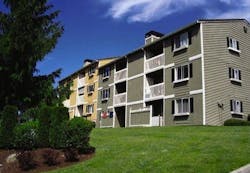If there’s one housing sector that is poised for a strong recovery in the next 12 to 18 months, it’s the rental housing market, namely apartment buildings.
If you’re not evaluating the apartment sector, it may be worth consideration for your local markets because it appears that conventional funding sources may soon become more-readily available for these projects.
Case in point: A January poll of more than 200 commercial real-estate investors, lenders, brokers, and executives by PricewaterhouseCoopers’ (PwC) Real Estate practice shows that nearly half (45 percent) are looking to invest in apartments in 2011. In fact, the investment community sees apartments as one of its best real-estate bets of the year, well ahead of other commercial developments such as office complexes, hotels, indus- trial buildings, and retail.
What’s driving the demand for apartments? Several factors, including a more positive outlook on job creation, a substantial undersupply of rental units, and pent-up demand for housing among Echo Boomers who are currently living at home. As PwC stated in its “2011 Emerging Trends in Real Estate” report (co-published with the Urban Land Institute), “People need a place to sleep and are looking for greater economies. In the ‘era of less,’ apartments fit the bill.”
Moreover, the authors state that the Echo Boomer generation is more likely to become long-term renters than previous generations because younger adults are waiting longer to marry and start a family. “Home-buying inclinations from generation Y/Echo Boomers will not stir and intensify for another 10 years. Until then, this large population cohort will rent as they build careers,” state the authors.
However, despite the investment community’s newfound interest in rental housing, chances are developers will not be able to keep up with the demand for these developments, at least in the short term. Carrollton, Texas-based apartment research firm MPF Research estimates that current demand for apartments is about two and a half times greater than the 114,000 units delivered in 2010. With a continued lack of supply, rents will most certainly rise and vacancy rates will drop, which will likely turn many would-be renters into potential buyers.
For more information on PwC/ULI’s “2011 Emerging Trends in Real Estate” report, visit: www.uli.org/researchandpublications.aspx.
About the Author

David Barista
David Barista is Editor of Professional Builder, Custom Builder and HousingZone.com, properties that combined reach more than 200,000 residential design and construction professionals. David has covered the U.S. construction industry for more than a decade and has won numerous editorial awards, including two Jesse H. Neal Awards.
